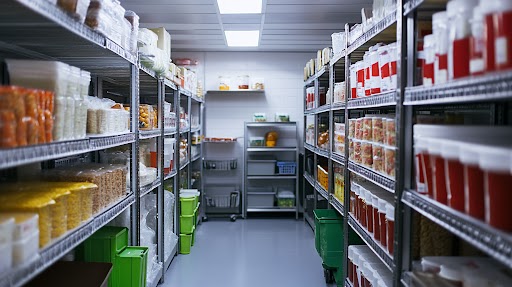What is a critical control point in food safety?


Food safety is a top priority for any catering or food business in the UK. Ensuring that food is safe to eat not only protects your customers but also your reputation and compliance with legal requirements. One of the most important concepts in food safety management is the critical control point (CCP). But what exactly is a critical control point in food safety, and why does it matter for your business?
A critical control point is any step along the food journey in your business where implementing preventative measures can reduce the risk of hazards to your customers. There are four hazards which are important to remember. These are:
To identify the critical control points in your food business, it is important to consider your food’s journey. This is the food’s process from arrival at your business to its service to customers. To identify your critical control points, think about any point in the food’s journey where it may be at risk from the four types of contamination.
For example, think about the food’s storage. If your fridge’s temperature is above 5°C, bacteria can grow, causing microbacterial contamination. As such, the temperature of your fridge is a critical control point. Similarly, raw meats may contain bacterial contamination such as Salmonella, which can only be eradicated by cooking them thoroughly. Thus, the cooking process is another critical control point.
Critical control points don’t just exist in food preparation. They can also include the rooms in which you store, prepare, and serve food. Both physical and microbacterial contamination can be caused by pests. There are three critical control points related to pests: deterrence, detection, and eradication. Another potential critical control point is the removal of waste. Designing a waste removal route which avoids food areas is the most straightforward way to address this critical control point. Even the way you serve your food can be a critical control point, particularly when considering allergenic contamination. Ensuring that critical control points are addressed can literally be a matter of life and death.
Now that you know what critical control points are in food safety, and how to identify them, you have to implement them. One way to do this is using HACCP. HACCP stands for Hazard Analysis and Critical Control Point. It is a food safety management system which is designed around identifying and targeting critical control points, so that your customers are safe. The principles of HACCP are:
HACCP is not just important for keeping your customers safe, it is also vital for being legally compliant. You are required by law as a food business to have a food safety management system based upon the above HACCP principles.
Understanding and managing Critical Control Points in food safety is essential for running a safe and legally compliant food business. By implementing a HACCP-based food safety management system, you protect your customers from foodborne illnesses and your business from legal repercussions.
If you want to ensure your team is fully trained in HACCP principles, consider enrolling in our Level 2 HACCP training course. This course offers an even more in-depth view into creating and implementing a HACCP system.
Join 950,000+ learners
Explore our award winning online video based training
The Safer Food Group
Unit 2, Integrity House,
Lower Lumsdale, Matlock
DE4 5EX
Back
to top
© The Safer Food Group 2025 | Privacy policy